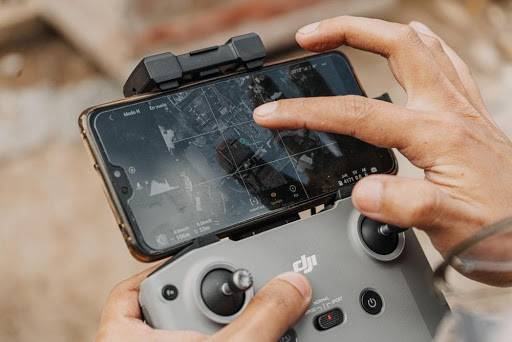Unmanned Aircraft Systems (UAS) are the new and emerging course of aviation in the 21st century. Initially introduced for the military sector, they are now entering the commercial and civil sector. While the technology of these gadgets is already towering, constant developments are being made to add new dimensions to them. BVLOS is one such advancement in this field that has expanded the use of UAS and can unlock the potentials of these vehicles even further.
 In the last few years, UAVs are finding exponential use in a wide array of applications for surveillance and safety checks, in domains such as construction, mining, product delivery, agriculture, logistics, and many more. UAVs can bring significant benefits in terms of cost savings, environmental impact, and risk to human life.
In the last few years, UAVs are finding exponential use in a wide array of applications for surveillance and safety checks, in domains such as construction, mining, product delivery, agriculture, logistics, and many more. UAVs can bring significant benefits in terms of cost savings, environmental impact, and risk to human life.
The current UAV market is estimated to be around 27.9 billion USD (2021) and is estimated to reach 58.4 billion USD by 2026. The introduction of BVLOS has contributed to the expansion of the market and with its multifaceted areas of operation, the market is expected to expand further.
BVLOS stands for Beyond Visual Line of Sight, which enables the UAVs to operate beyond the normal vision range of the pilot. The development of BVLOS has been the result of trials, demos, and data collections over the years. Regulations that allow the UAVs to fly beyond the pilot’s vision will benefit domains like power generation and railways extensively. Imagine being able to inspect an entire solar farm without having to change your location! It will be a dynamic step towards automation and remote operation.
The BVLOS capabilities are becoming a quintessential aspect of the drone industry. They provide numerous benefits over the regular line of sight flights. Not only are they cost-effective, but energy efficient with fewer takeoffs and landing phases, and cover a large ground in a single flight. Not only can it cover hazardous areas, but the low altitude flying capability of drones can help in high-resolution data collection. BVLOS operational scalability is helping immensely to boost up profitability in various sectors.

The drone technology is going through groundbreaking developments with the assistance of BVLOS. It has brought us a step closer to the design of a reliable and responsive flight control system. This will tackle the time-intensive and non-decision-making tasks, offering more time to pilots for focusing on the overall flight status. BVLOS is helping businesses collect data in a safe and cost-efficient way as compared to traditional methods like manned aircraft and satellites. It can also cater to the need for time-specific data collection. By enabling the operation of drone-based sensors remotely, businesses can gather data from inaccessible places. It can benefit everyone from the workers to the customers they serve and is the stimulus to industry transformation. Though, what we are discussing today might be just a glimpse of the potentials of BVLOS Drone Operations.
Currently, the safety and security of BVLOS operations are one of the most pressing challenges. Uncontrolled flying may put lives and essential infrastructural facilities in danger. It may cause midair collisions, which pose a risk to the population and property on the ground. As the number of drones increases, unmanned traffic management becomes more complex as UVAs cannot be traced by airplane tracking systems. For an effective operation of the BVLOS systems, one needs well-coordinated UA traffic in the airspace, extensive planning, situational adaptations, and awareness of the surroundings. With limited energy-storing resources, energy optimization can also be demanding. The safe and secure navigation of the drones with the current constraint of computational power and storage may turn out to be a difficult task.
The incorporation of BVLOS based drones without posing any risk to the airspace system comes with technical, operational, and regulatory challenges. But the ongoing research and advancements have shown promising results for flight and operational safety of the BVLOS expeditions. As the systems become safer and easier to work, various industries and individual operators will be able to pursue BVLOS operations in different ways. The future of this technology is immense. Tasks like mapping, long-distance inspections, emergency response, and aerial surveying, can be done much faster and could save millions of dollars. This is just a start to the potential positive impacts the BVLOS can have in different sectors, and it is all set to become the vision of the future.

Founder Dinis Guarda
IntelligentHQ Your New Business Network.
IntelligentHQ is a Business network and an expert source for finance, capital markets and intelligence for thousands of global business professionals, startups, and companies.
We exist at the point of intersection between technology, social media, finance and innovation.
IntelligentHQ leverages innovation and scale of social digital technology, analytics, news, and distribution to create an unparalleled, full digital medium and social business networks spectrum.
IntelligentHQ is working hard, to become a trusted, and indispensable source of business news and analytics, within financial services and its associated supply chains and ecosystems






























